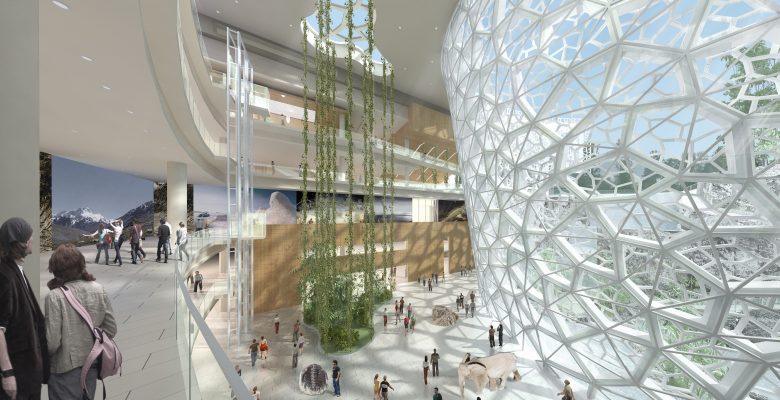The “Cell Wall” is the iconic feature of the Shanghai Nature Museum and the main design feature from the initial competition phase. It is comprised of three layers, each with its own unique geometrical pattern and organic form, organized in an elliptical cone shape envelope of the atrium. At the core is the main layer, the structural cell layer, which emphasizes the organic cells as structural building blocks of nature. It is part of the building structure and carries the weight of the museum roof as well as supporting the 33.5 meter (109 feet) vertical span of the curtain-wall. An inner layer, which is the waterproof envelope of the building, is formed by the glass and aluminum mullion curtain-wall. The outer layer is a solar screen that emulates the cellular building block of all life forms and the traditional Chinese window screens. The intent of this article is to document the original research done for this particular project in resolving complex organic geometries set to a full scale building. While there is a wealth of theoretical research on the subject of mesh structures, there are very few built examples where these mesh geometries fully function as structural building elements and are built to architectural scale. To that extent, a historical approach to problem-solving was of little use and an innovative, original approach was sought. This article discusses the unique design of the “Cell Wall” system in terms of its complex geometry, design process and construction details. It explores geometric solutions for the wall, researched by trial and error, in terms of achieving the seemingly random organic patterns of the wall within the constraints of readily-available rectilinear building materials, structural realities in designing to full architectural scale and limitations of fabrication methods. It tracks its development from concept design to construction drawings through all different options and their variations to the ultimate modular solution. KEYWORDS: random organic patterns, tessellated patterns, polygonal mesh structures, solar sun-screens, triangular mesh window systems, voronoi shell structures
This article originally appeared in Vol 02.01 of the Perkins+Will Research Journal. CLICK HERE to see the whole article.

